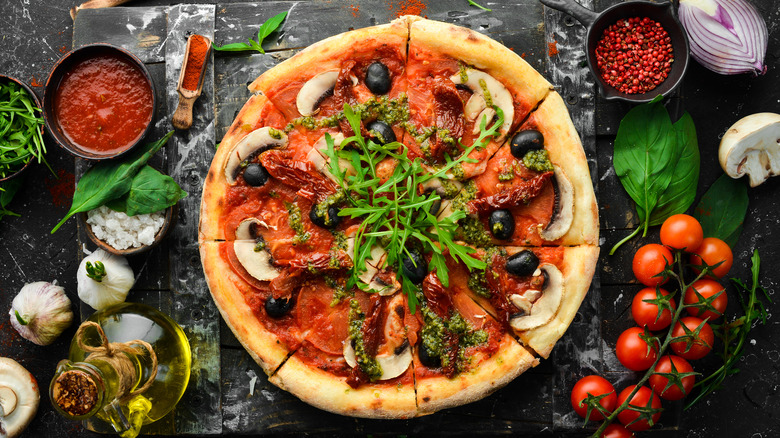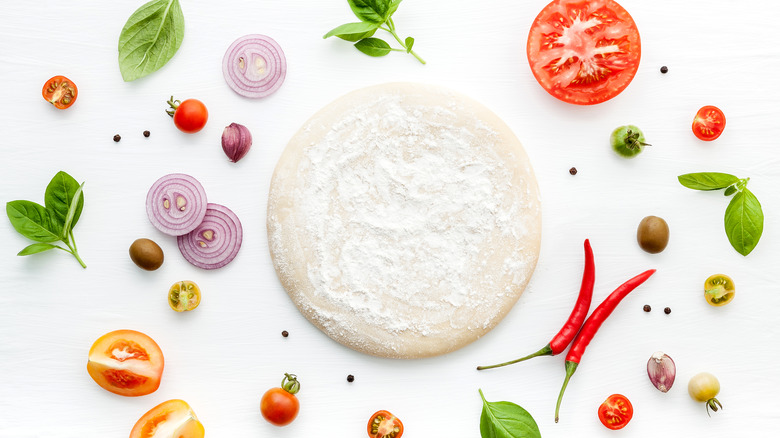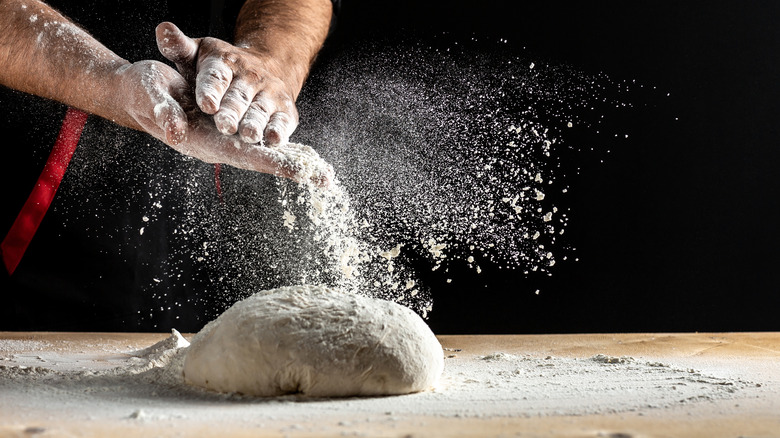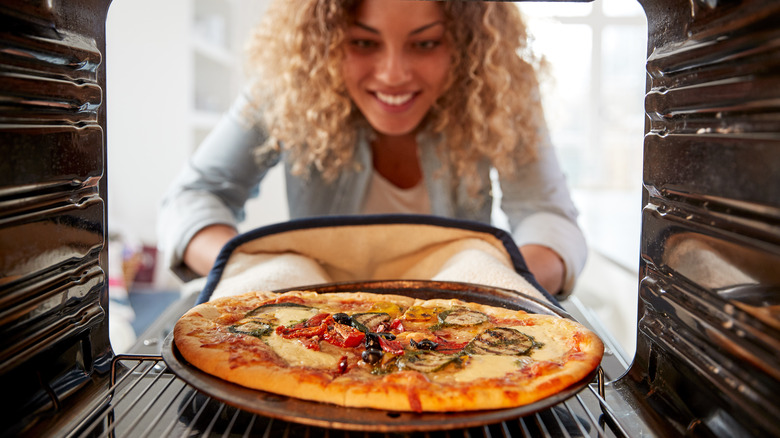Tips To Ensure Perfectly Crisp Pizza Crust
The verdict is clear; homemade pizza crust tops all of its frozen counterparts. But when it comes to making your own dough at home, things get a little bit more complicated — OK, a lot more. With frozen varieties, most of us fall short about 20 minutes in when we smell something burning and remember putting a pizza in the oven. However, there's much more room for error when crafting a crust at home, especially when considering the texture and crispiness of your crust.
With all the freedom and control making your own crust offers, taking the time to make your pizza crust at home can be tricky — especially if you're a fan of a crispy and light pie crust. Whether your pizzas are coming out too hard or too soggy, these tips for a perfectly crisp pizza crust will help you get them just the way you like them.
Don't over-top it
When making pizza, it's easy to go a little overboard. It's understandable, but even though piling on as many of your favorite toppings as you can sounds delicious, the end product will undoubtedly lead to disappointment — especially if you appreciate a crispy crust. To achieve a pizza crust with a nice crunch, it's best to practice minimalism with your toppings to hold off on over-crowding it.
As Pioneer Women explains, putting too many toppings on your pizzas inhibits the crust from cooking fully. This means that if you pile on the toppings, you could end up with a pizza with a raw, undercooked center. While it's safe to say most of us prefer a fully cooked dough, this is especially important for those who like it crispy. If you're someone who needs to maximize toppings, consider cooking them separately and adding them once the crust has finished baking.
Hydrate the dough
While it may seem counterintuitive, adding more water can actually make your pizza dough crispier. Pizza Media says that a dough that contains more water has the ability to expand in the oven readily. However, you should be careful not to add too much water; this is usually the recipe for a sticky dough that's virtually impossible to knead or roll (via Pizza Heaven).
Additionally, due to its porosity, Pizza Media explains that a watery dough acts as a thermal blocker between the heat from the oven and the pizza sauce. Without this, your sauce can get too hot and actually create steam which will inevitably lead to a soggy conclusion. To get the water concentration just right, Pizza Heaven recommends 65% hydration, meaning that the amount of water added is 65% of the amount of flour. If that's too sticky, you can slowly add flour while you knead the dough until you achieve the perfect, in-between texture.
Up the temperature
Now here's a tip that just makes sense. If you want to get a good crisp on anything you're cooking, you should amp up the cooking temperature. When cooking pizza, Pizza Heaven recommends putting your oven on the highest setting possible to get a crispy crust. When doing this, keep a careful eye on it, so it doesn't end up burnt.
What's not as obvious, however, is the importance of the type of baking tray we choose. The simple addition of a pizza stone or steel is the next best thing to having a pizza oven in your backyard. Not only do they heat up fast, but they're able to retain the heat and distribute it evenly — which means evenly crisp and light homemade pizza crusts, according to Pizza Heaven. If you don't have one on hand, another solution is to place your pans in the oven while it preheats (via The Kitchn).



